
Where We Be
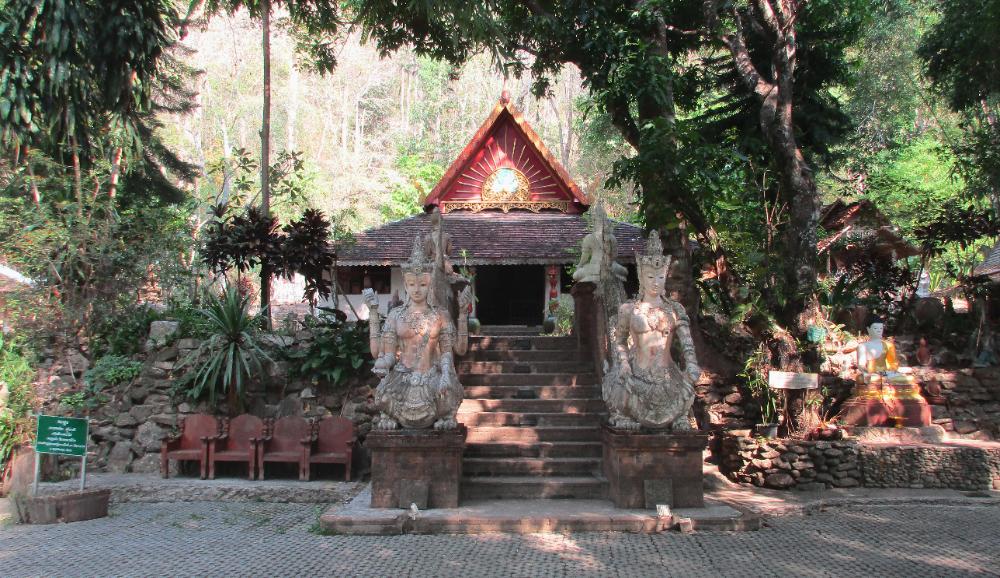
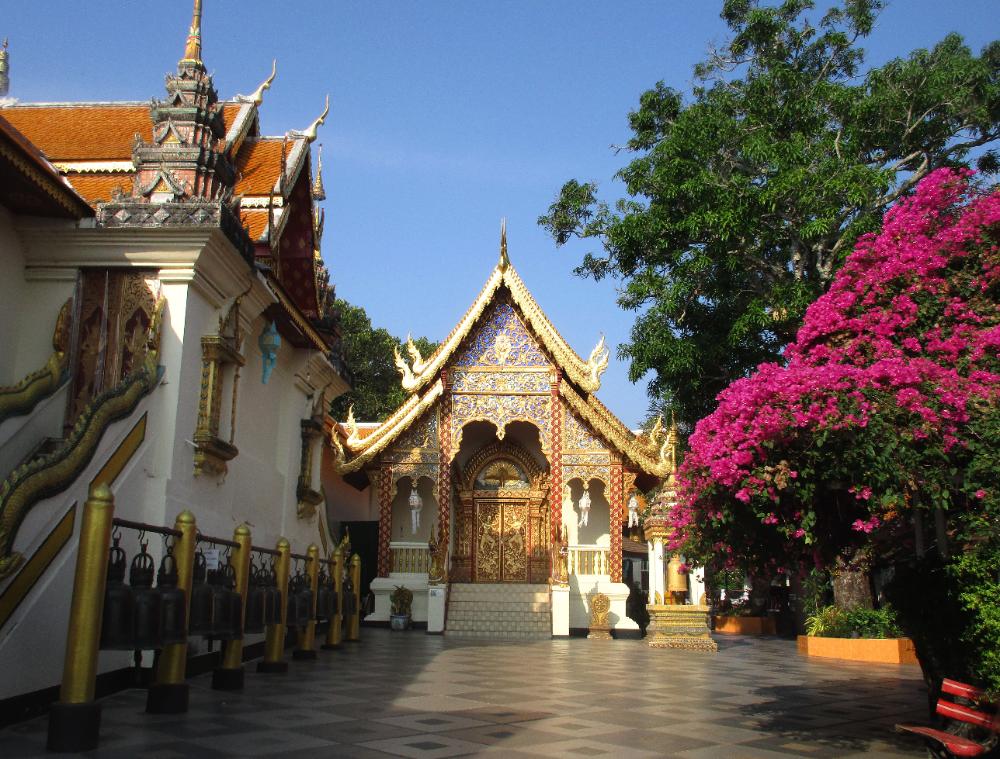
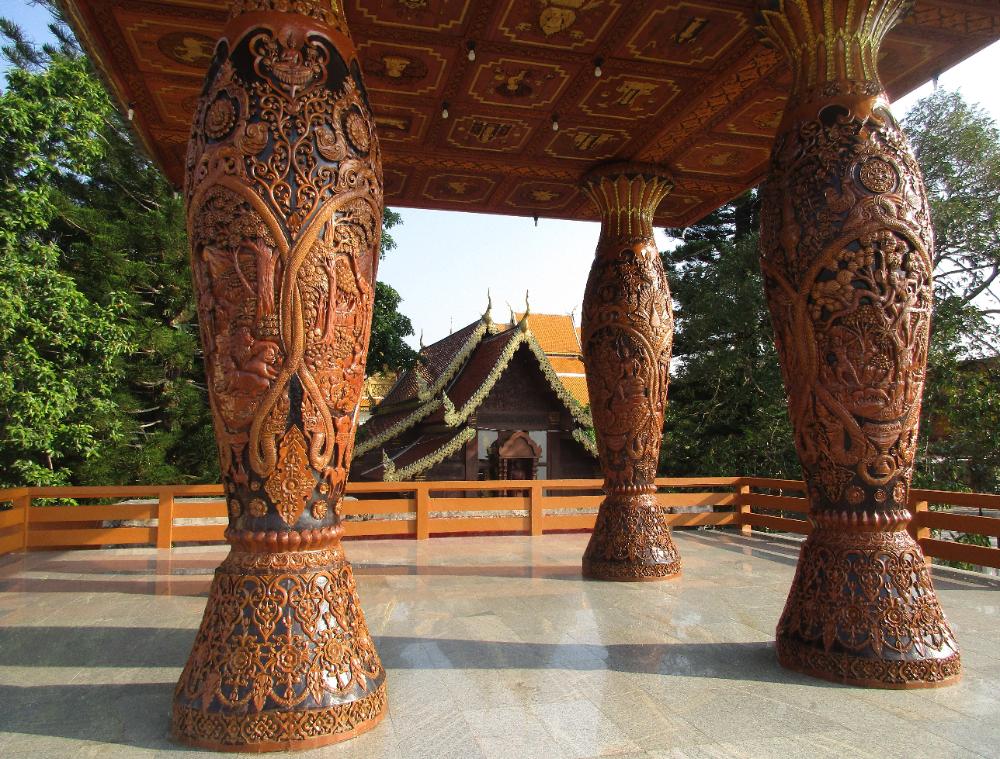
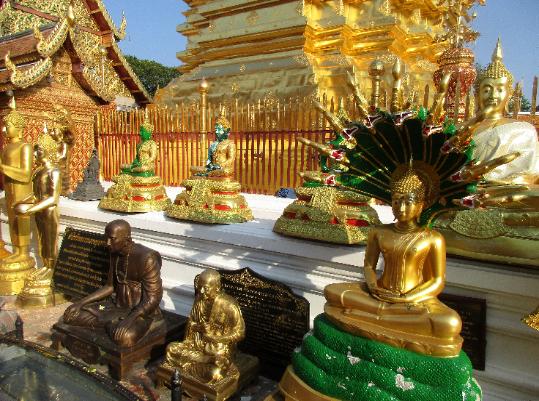
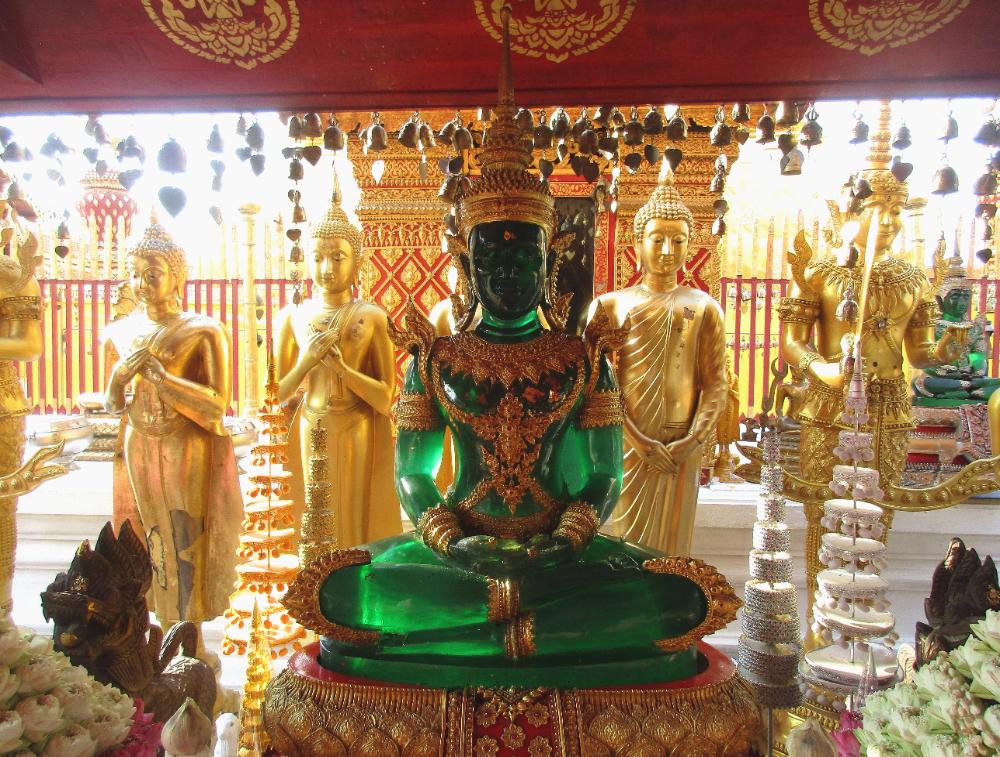
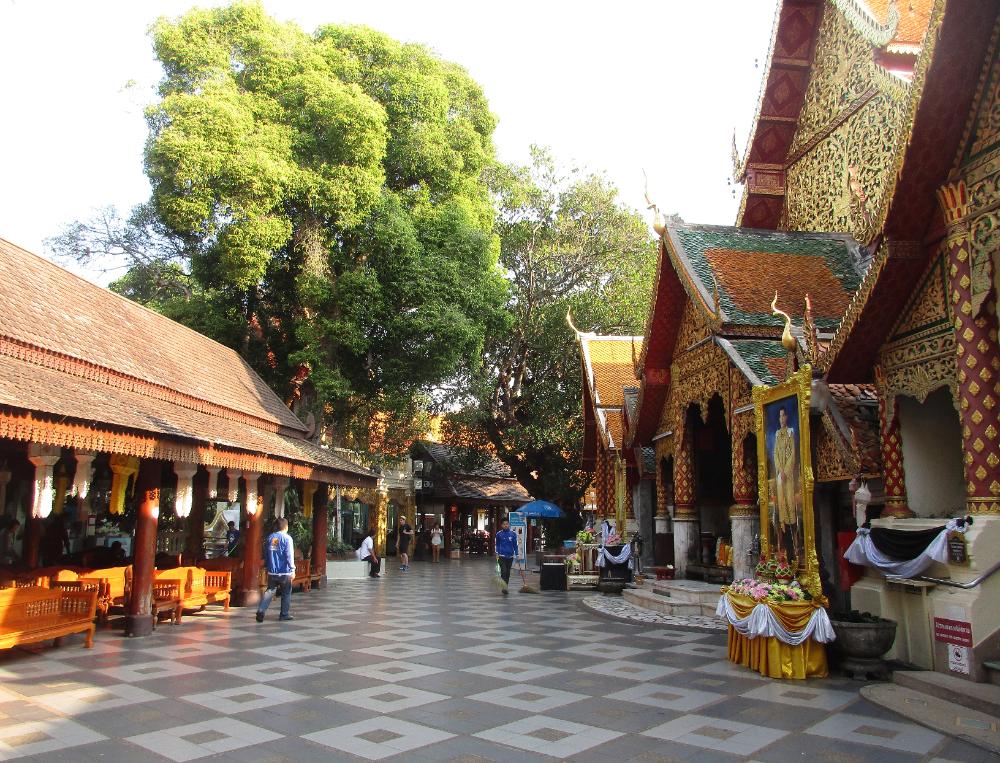
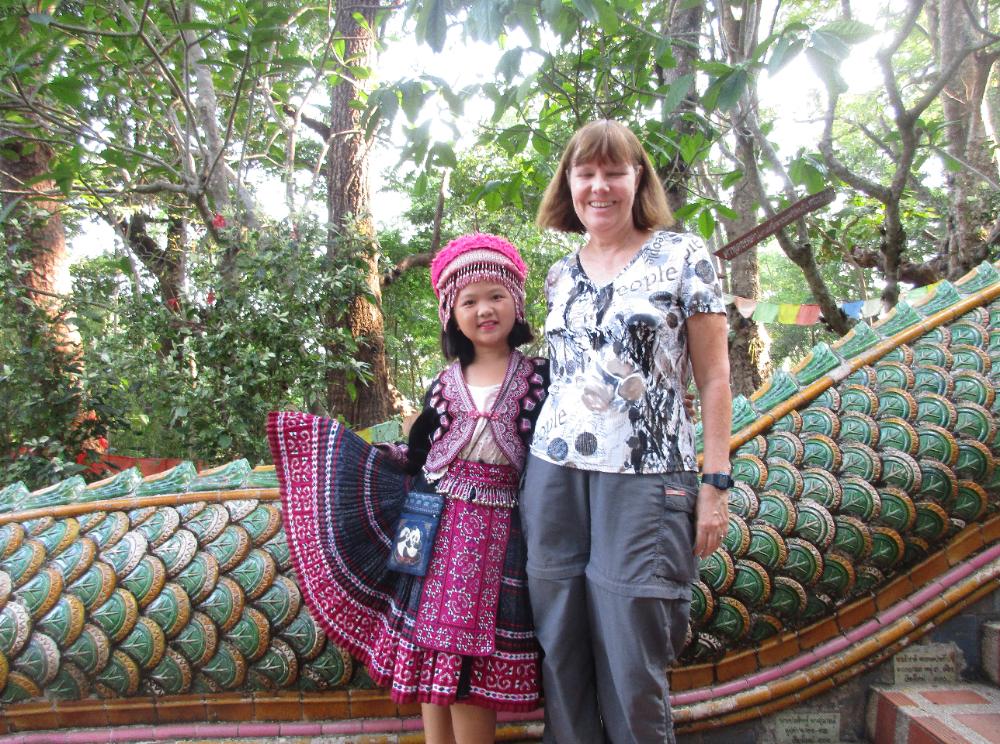
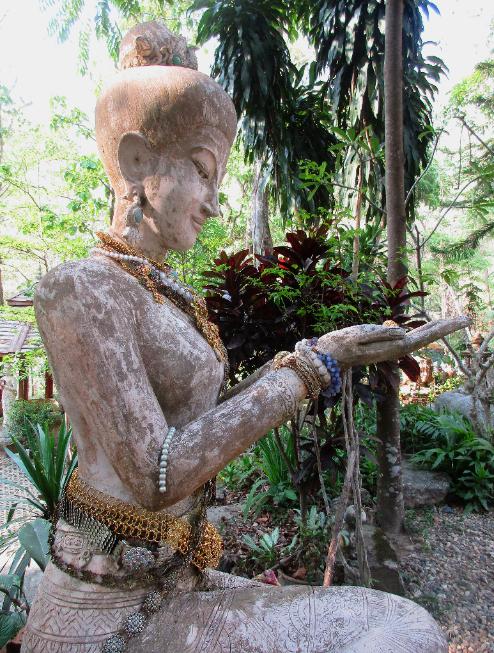
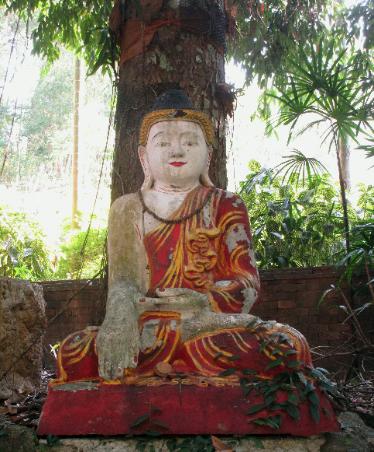
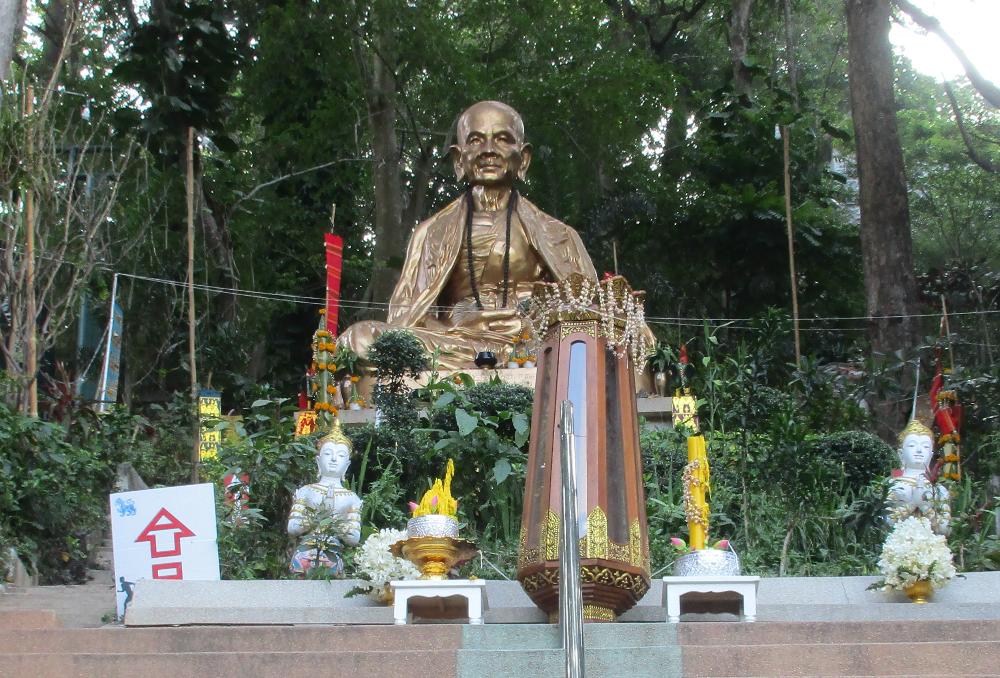
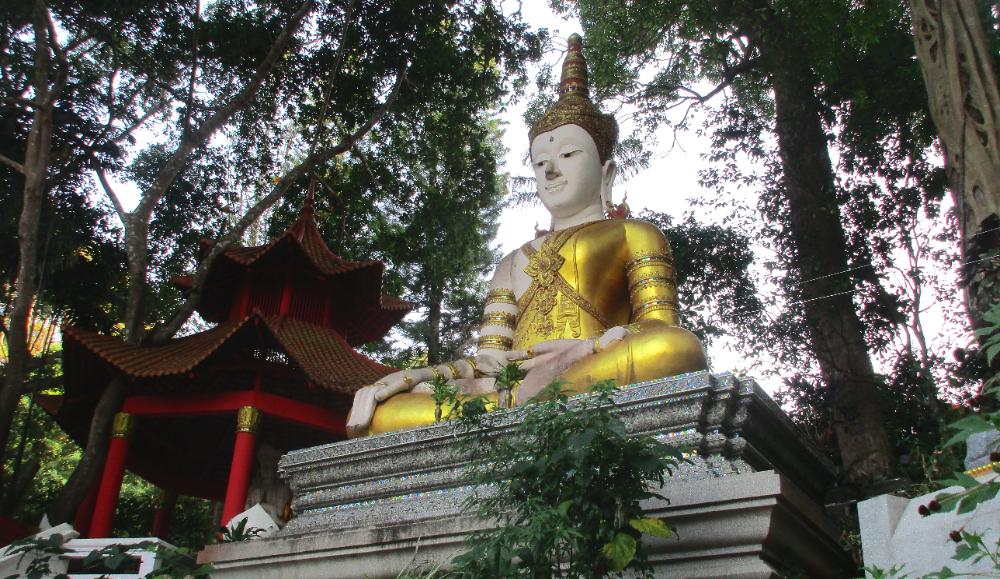
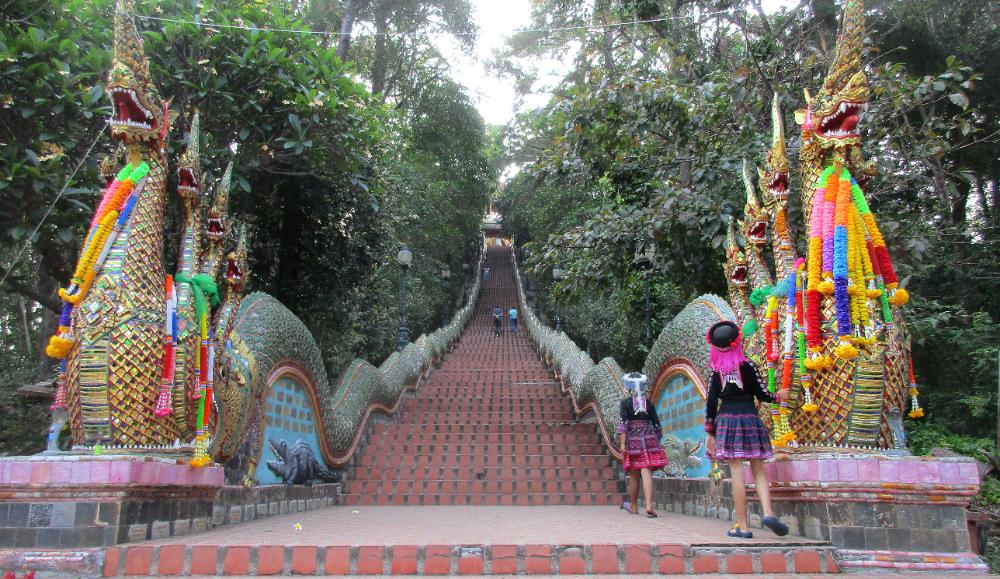
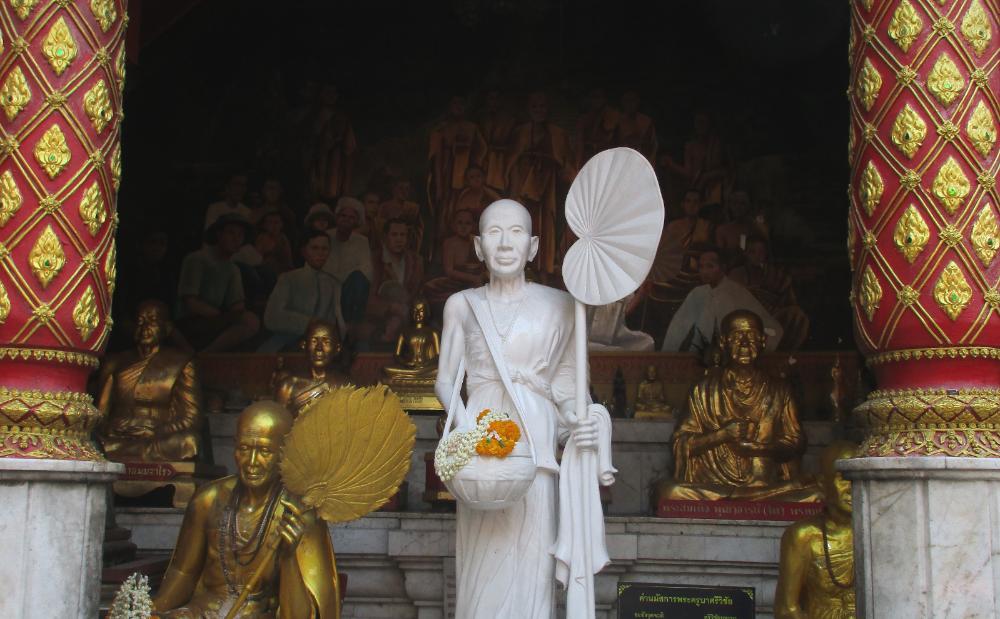
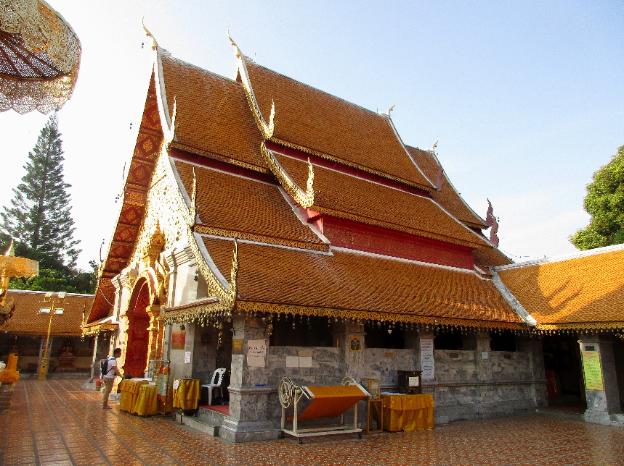
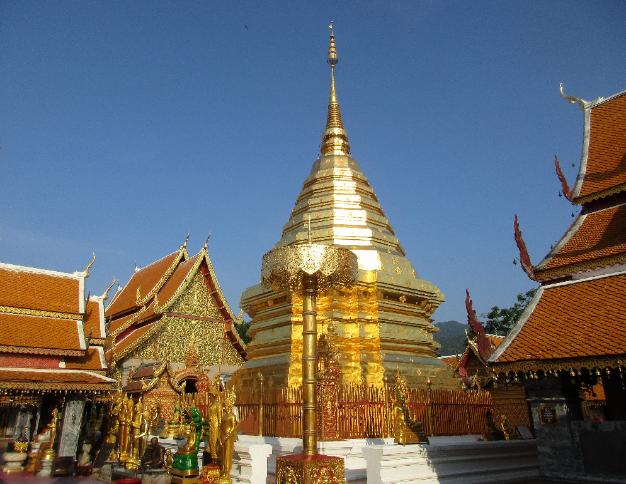
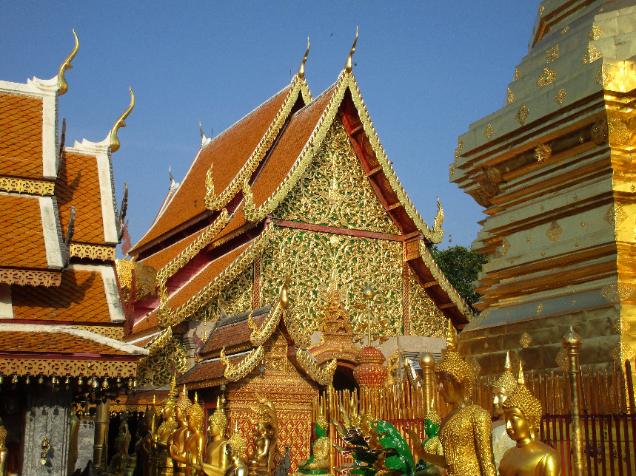
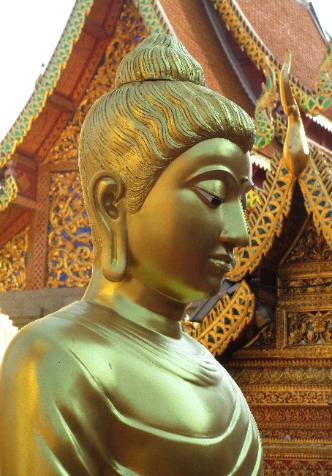
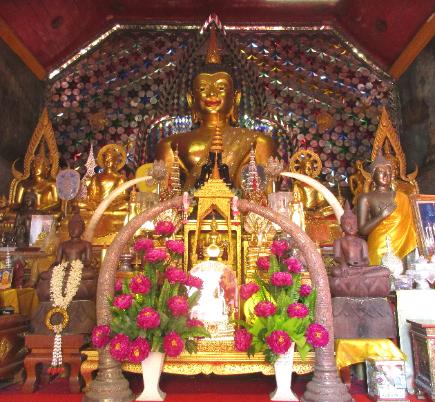
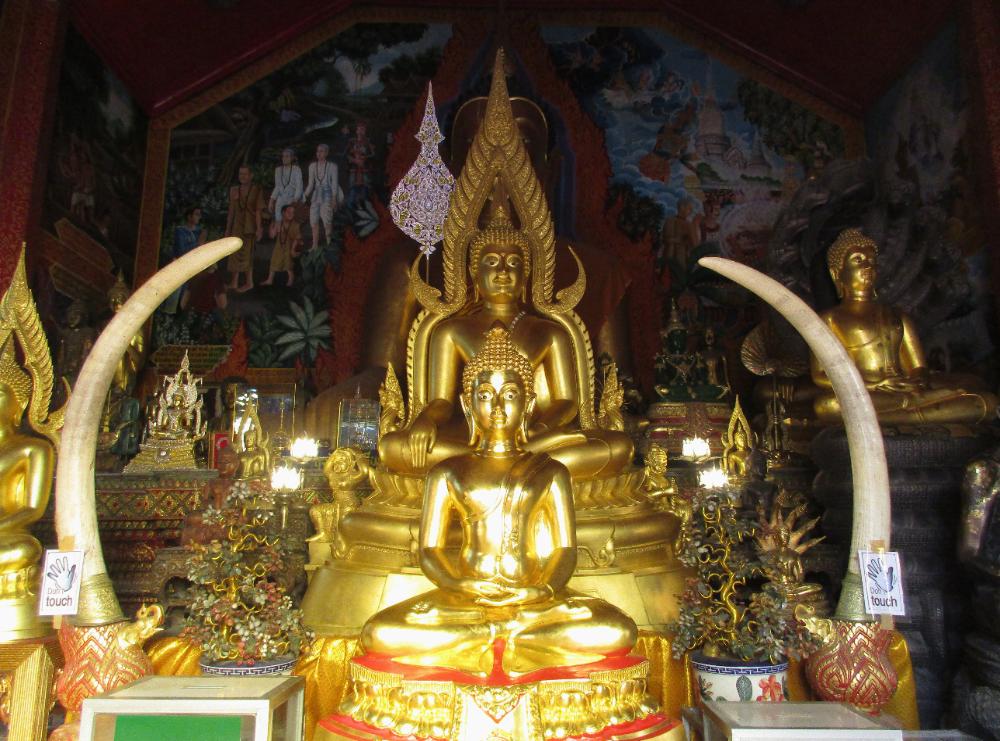
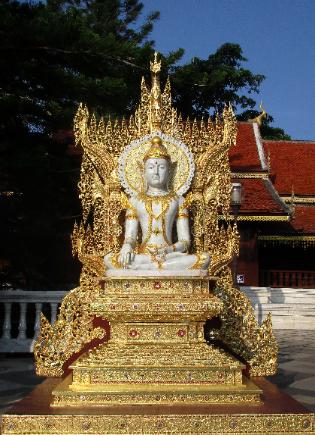
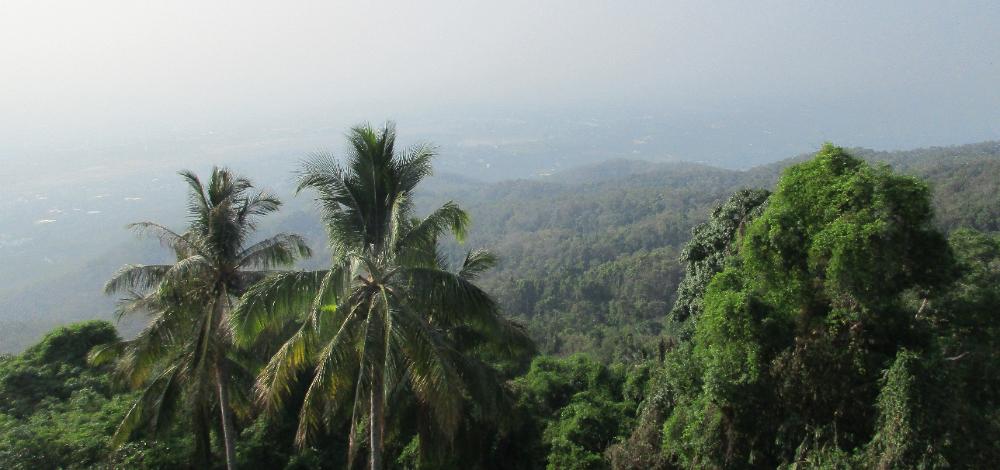
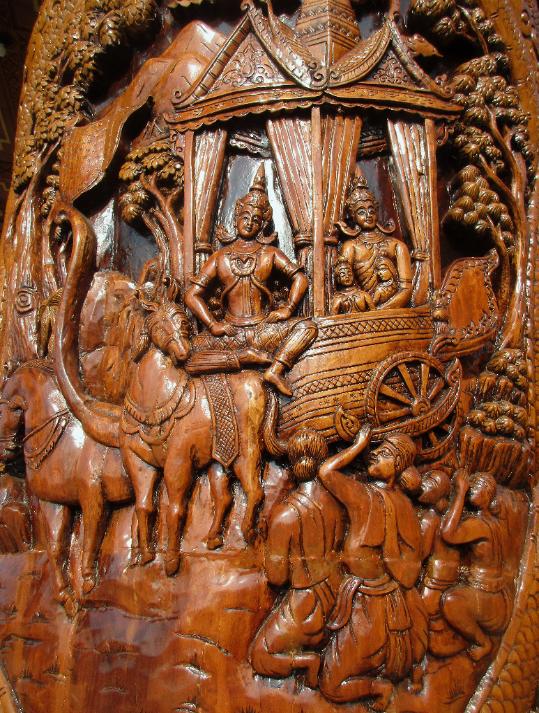
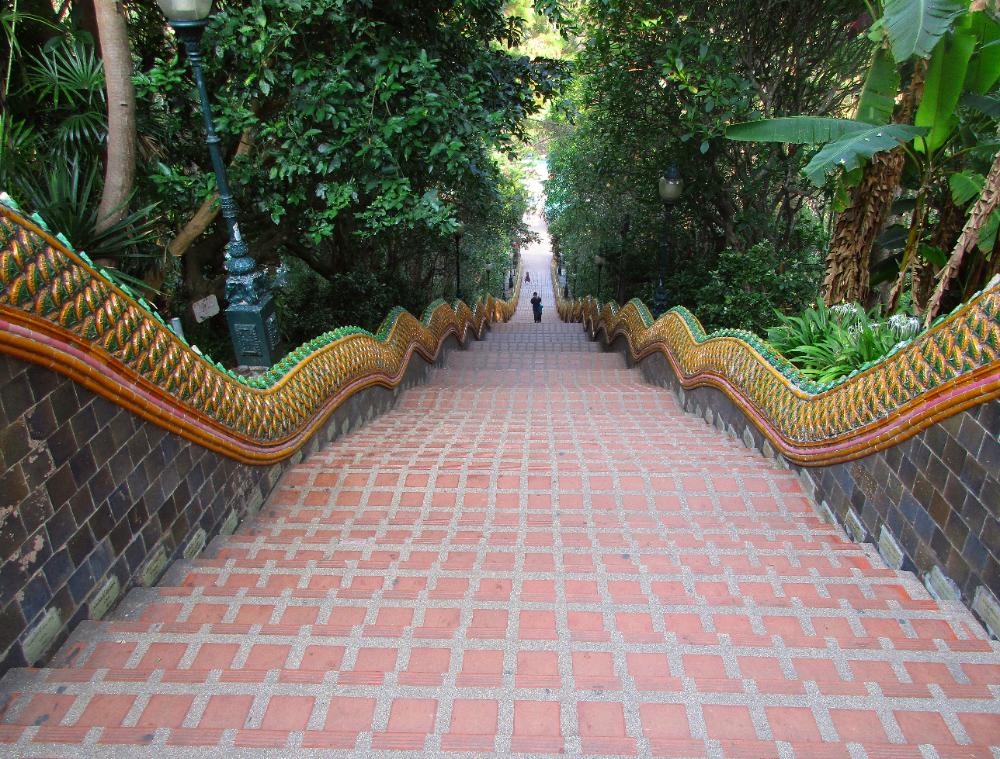
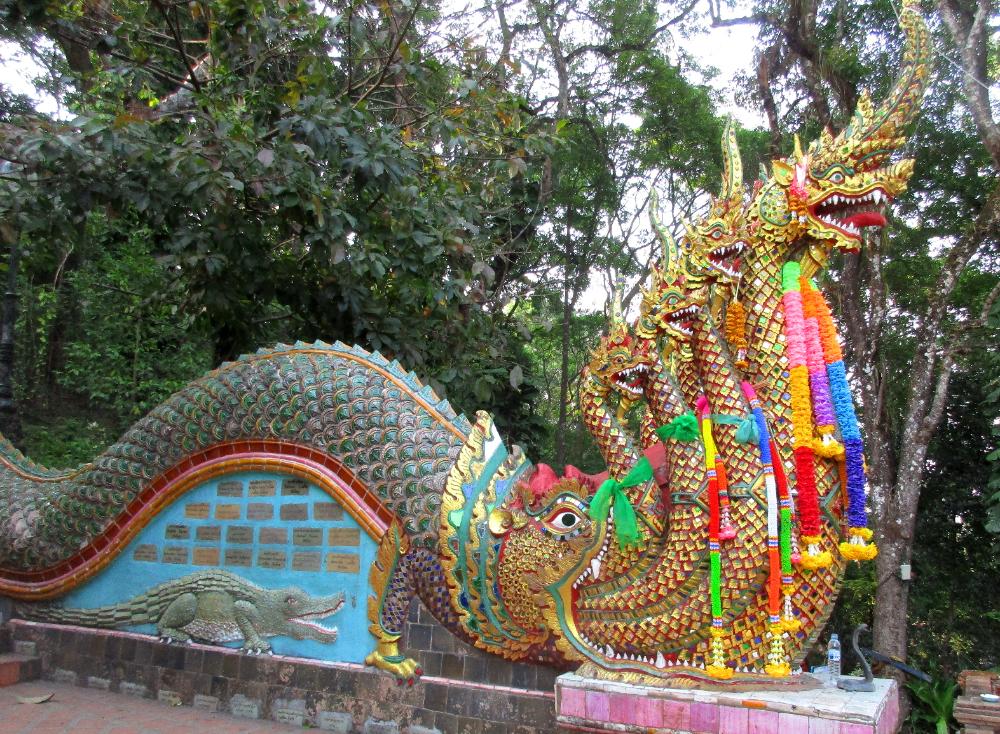
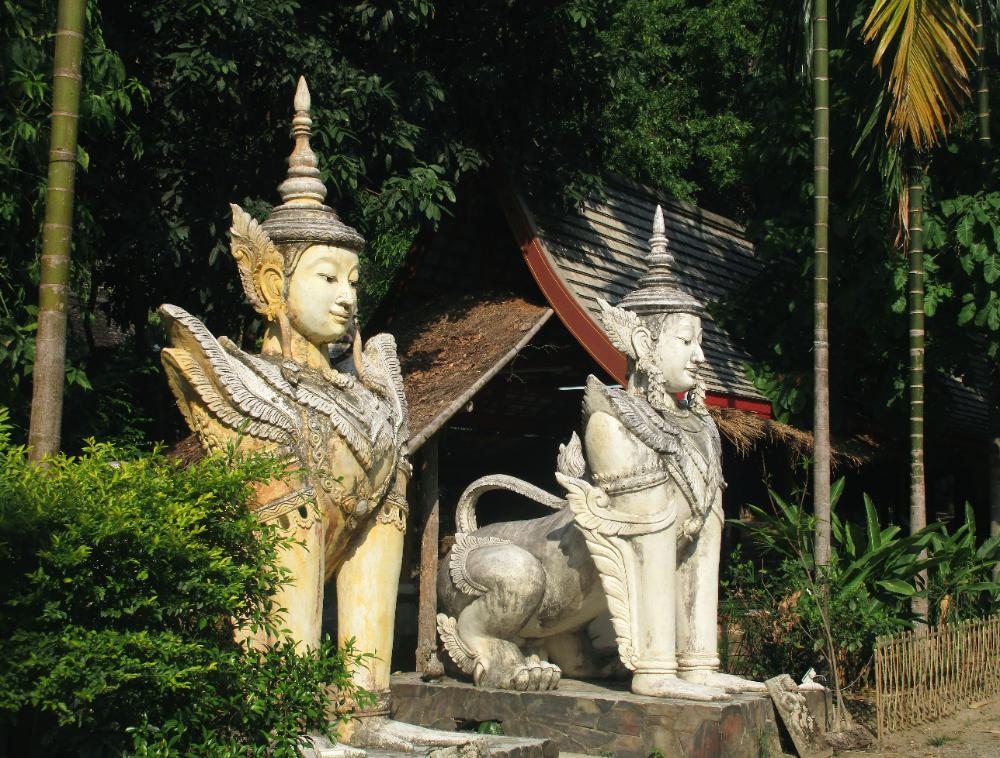
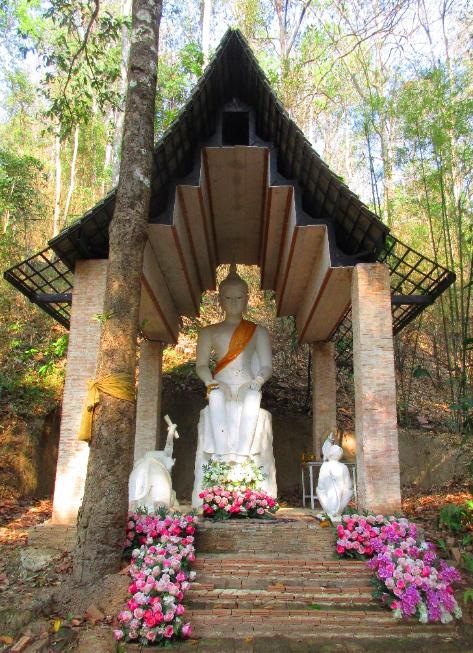
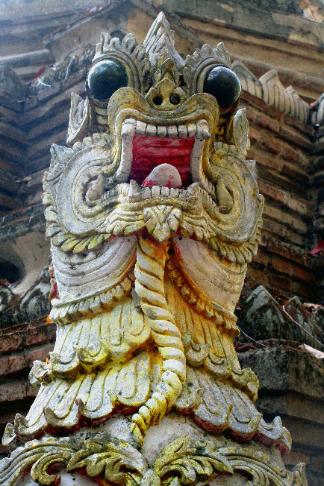
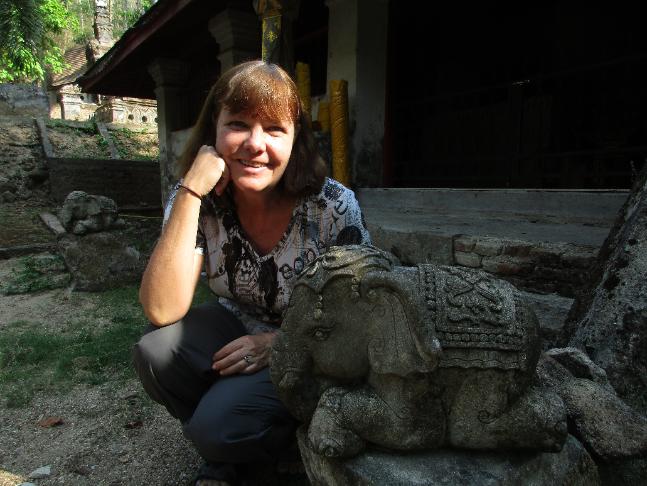
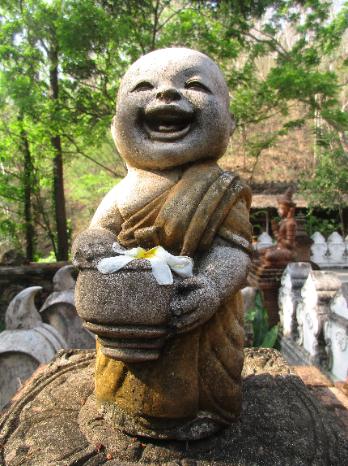
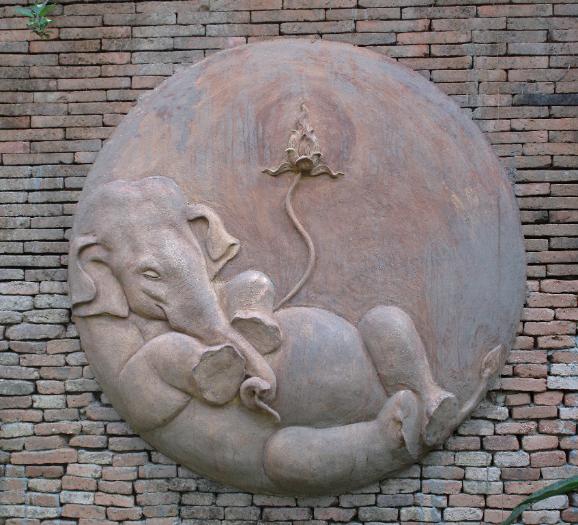
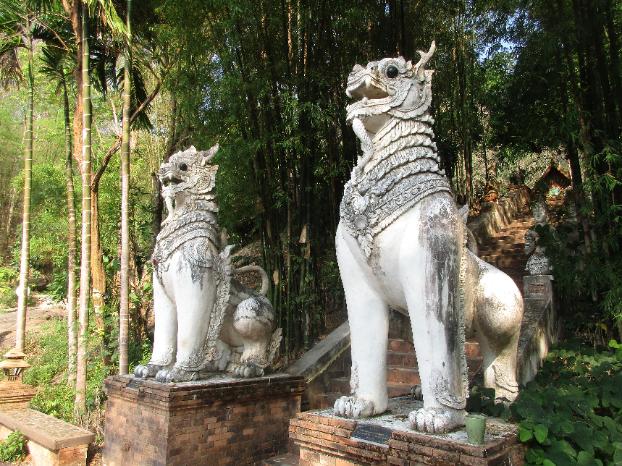
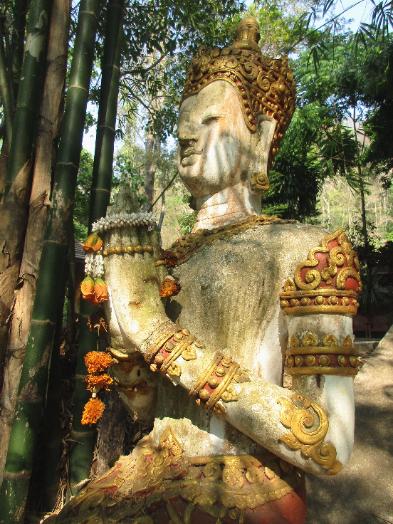
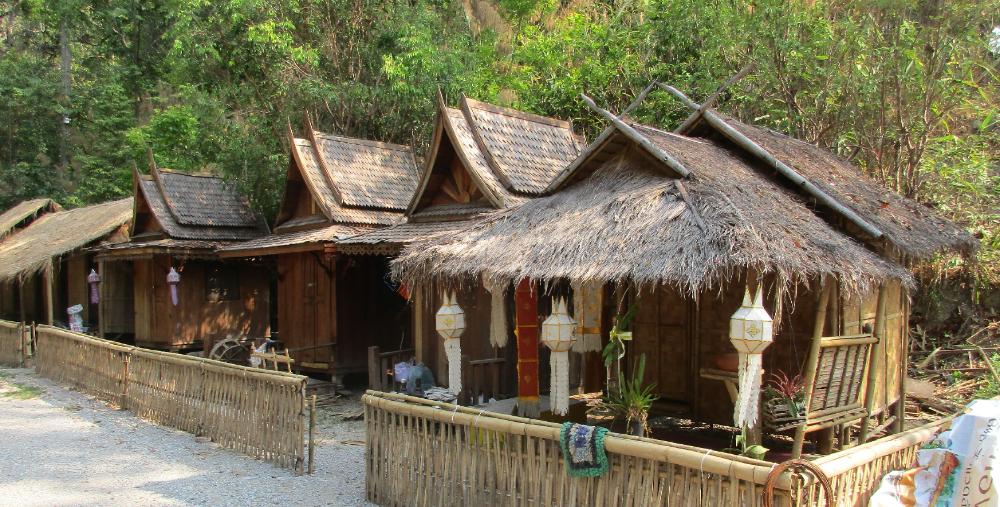
| Doi Suthep is one of northern Thailand's most sacred temples. It overlooks the city of Chiang Mai from its mountaintop location. |
| Two Mountain Temples -- Chiang Mai |
We got up bright and early to see two temples
located in the mountains just west of Chiang
Mai -- Doi Suthep and Wat Pha Lat. A songthaew
drove us up winding roads for half an hour to
the higher temple first, Doi Suthep. This popular
temple can be overcrowded at times, but when
we visited around 7:30 am it was mostly empty
except for a few locals praying. We climbed 309
steps up the Naga Staircase to reach a terrace
with golden shrines, breadfruit trees, and rock
gardens. Climbing higher we arrived at the top
terrace, replete with gleaming gold stupas and
statues. This a considered a sacred site by
many Thais. We circumnavigated the main stupa
twice (shown left) before descending the stairs.
On the drive back down we stopped at what is
sometimes called the Jungle Temple, Wat Pha
Lat. This is a much smaller temple tucked away
in the jungle and is our mental image of what a
Thai temple should be -- small and isolated, with
moss growing over statues half hidden in the
foliage. There are places for monks to meditate
near the river (or where the river would be in
rainy season since it was dry when we visited).
There's a lot of attention to detail here and we
thoroughly enjoyed our half hour visit. Our taxi
driver waited for us at both temples before
taking us back to our hotel, all for less than $20.
located in the mountains just west of Chiang
Mai -- Doi Suthep and Wat Pha Lat. A songthaew
drove us up winding roads for half an hour to
the higher temple first, Doi Suthep. This popular
temple can be overcrowded at times, but when
we visited around 7:30 am it was mostly empty
except for a few locals praying. We climbed 309
steps up the Naga Staircase to reach a terrace
with golden shrines, breadfruit trees, and rock
gardens. Climbing higher we arrived at the top
terrace, replete with gleaming gold stupas and
statues. This a considered a sacred site by
many Thais. We circumnavigated the main stupa
twice (shown left) before descending the stairs.
On the drive back down we stopped at what is
sometimes called the Jungle Temple, Wat Pha
Lat. This is a much smaller temple tucked away
in the jungle and is our mental image of what a
Thai temple should be -- small and isolated, with
moss growing over statues half hidden in the
foliage. There are places for monks to meditate
near the river (or where the river would be in
rainy season since it was dry when we visited).
There's a lot of attention to detail here and we
thoroughly enjoyed our half hour visit. Our taxi
driver waited for us at both temples before
taking us back to our hotel, all for less than $20.
| A final series of steps brings you to the top or inner terrace. A golden stupa stands at the center, encircled by shrines and statues. |
| It was wonderfully quiet and uncrowded when we visited, so we could really appreciate the beauty and spirituality of the place |
| Golden Buddha and Bodhisattva statues fill every shrine and niche. We walked around the central stupa twice just to take in all the detail. |
| This replica of the famous Emerald Buddha stands out amongst all the gold |
| The elephant tusks bracketing Buddha are significant here. Legend says a white elephant carrying a relic of Buddha was released into the jungle. It climbed to Doi Suthep, trumpeted three times, then dropped dead. The king took this as a sign a temple should be built on this spot back in 1383. |
| At the top of the Naga Staircase is a broad terrace with breadfruit trees, golden shrines, and rock gardens |
| Away from the central stupa you'll find other parts of the temple to explore with beautiful statuary and artwork |
| The broad walkway shown above leads to a viewing terrace. On a clear day you'd get a terrific view of Chiang Mai from here. Not today! |
| Continuing along the walkway you come to these intricately carved wooden pillars. We thought these were just stunning. |
| Detail from one of the pillars |
| Don't miss these quieter corners of the temple -- they have a serene beauty all their own |
| Here's something fun: the scales of the Nagas are green when looking up the stairs and gold when looking down |
| Young girls in traditional dress wait on the steps hoping you'll pose with them for a small donation |
| The body of this giant Naga (snake) winds all the way up the staircase. We're not sure what the symbolism means that it's eating (or creating?) other nagas. |
| We loved our visit to Wat Pha Lat -- the Jungle Temple. You'll go right by it on the way to or from Doi Suthep so be sure to stop. |
| This place feels lost in time and just a little magical with its jungle setting. We were the only ones here at the time, which added to the sense of enchantment. |
| There are lots of statues, both frightening and cute, to enjoy here |
| If you're really up for an adventure, you can hike to Pha Lat and Doi Suthep right from Chiang Mai by following the Monk's Trail (starting near the zoo) |
| It's very quiet here, and you can see why people might want to come to such a place for meditation |
| We wandered all over the grounds and thoroughly enjoyed each new discovery we made |
| You'll definitely leave feeling happy you came |
| And if you want to stay longer, you could always ask a resident monk about staying in one of these modest bungalows |
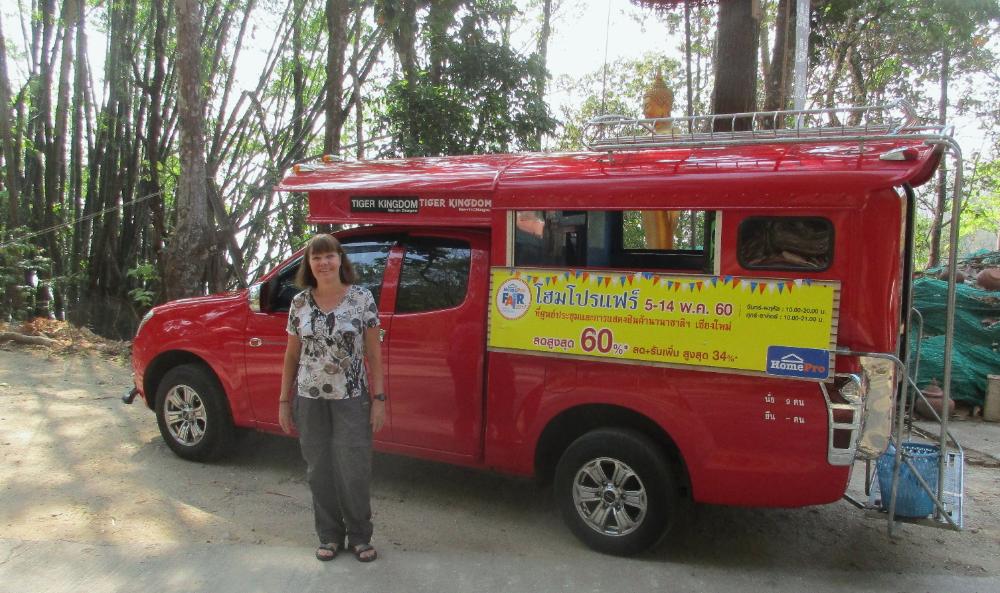
| We liked this statue of an old monk holding a lotus leaf staff in one hand and a basket of garlands in the other |
| The Naga Staircase with its 309 steps makes for a dramatic entrance. There's a cable car if the stairs seem too daunting. |
| We met our driver near the base of the Naga Staircase. A private Red Taxi or songthaew like this will run you 600 to 800 baht (~$20 to $25) for the several hours it takes to see both temples. |
| Near the base of the stairs are statues venerating past gurus and monks like this one to Phrakuba Srivichai |
| Buddha makes the first of many appearances as you climb the stairs |
| Doi Suthep (Wat Phra That) |
| Wat Pha Lat (Sakithaka) |
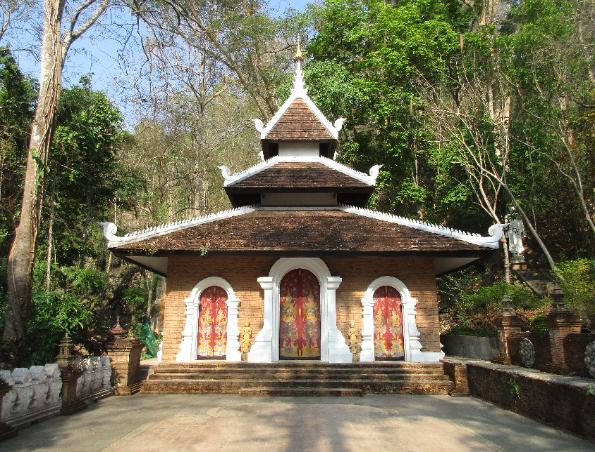
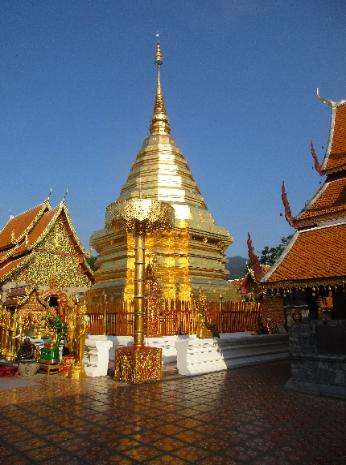
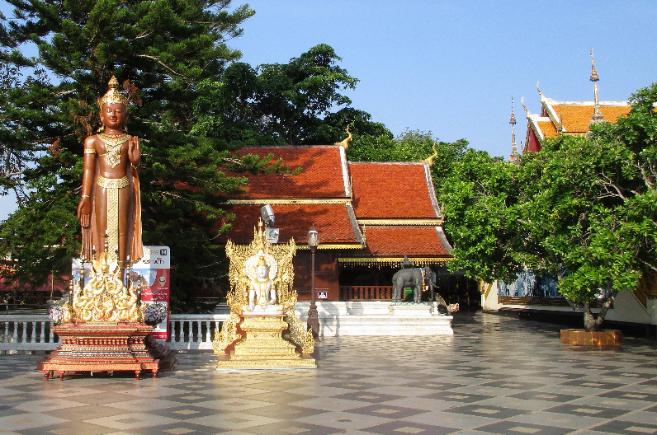
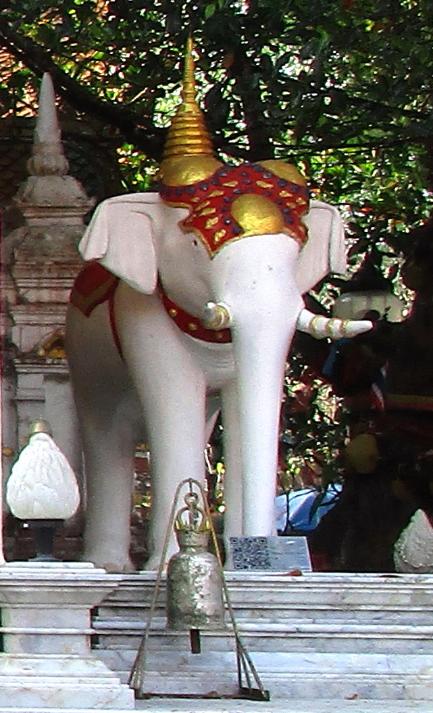
| Nearby, the White Elephant Shrine celebrates the temple's founding |